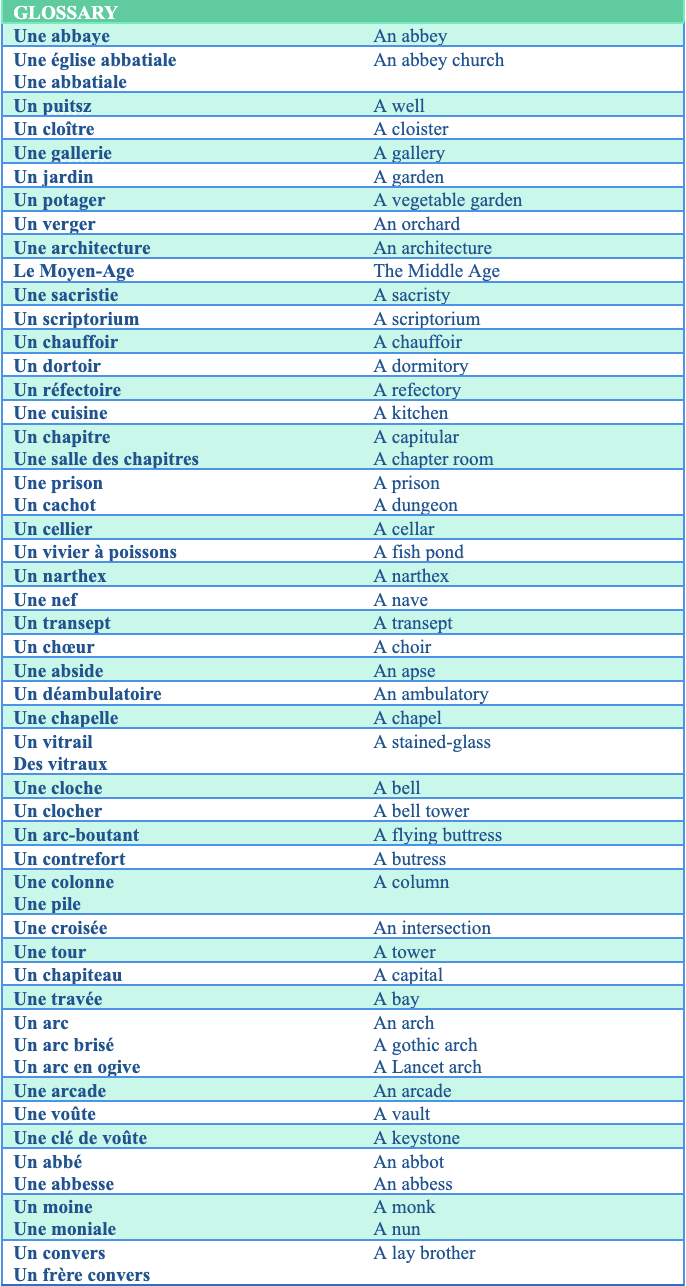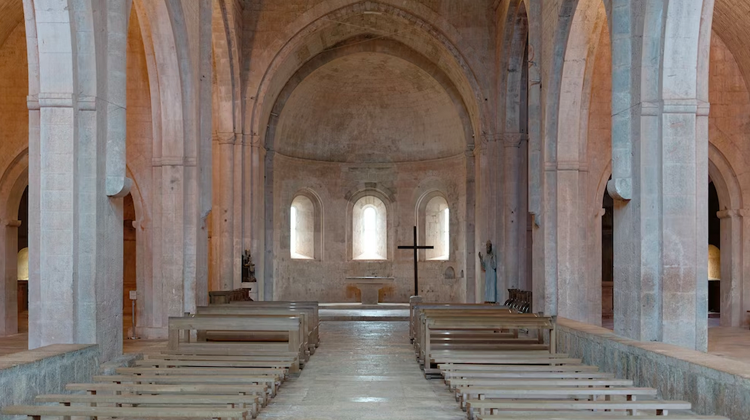Introduction
An important part of the architectural, historical, and cultural heritage of France resides in its abbeys. If you have the opportunity to visit France, don’t miss those fabulous sites, to improve your knowledge of French architecture and history.
Despite the fact that most of the abbeys of France and Europe were abandoned and have fallen into ruins, many of them are owned by the state or fortunately have been bought by private owners, who put efforts to restore the edifices and rearrange them for visits, exhibitions, concerts, wedding receptions and business meetings. Some ancient abbeys are still occupied by religious communities or have seen the return of new ones.
Architecture and living
The main structure of an abbey is organized in a square, where the cloister is central, delimited by 4 galleries and a garden in the middle, frequently holding a well. The leaf of “cistelle” (order eponym Cistel) commonly used in sculpture is the emblem of the Cistercian order.
From the cloister, you have access to different parts of the abbey.
First of all, the church, also called an abbatial church, is the common space most used by monks during their daily life, which was structured around religious services: prayers, mass, and lectures. Clerics and cantors stay in the choir, believers participate from the nave.
Substantial time is also dedicated to studying in a library filled with precious books, particularly on spirituality, science, and literature, or to copy the Bible in the scriptorium of the monastery.
Furthermore, the “chauffoir” (the heated room), notable for its chimney is often next to the scriptorium, allowing monks to come and warm up their inkwells and liquefy the ink for their work as copyists. The Abbaye de Sénanque, long abandoned, is currently occupied by monks and is being restored gradually. Its chauffeur was recently renovated with a functional chimney.
One of the four galleries of the cloister is occupied by the chapter room, the only place where monks have the right to express themselves, during a general meeting of the community.
Besides this rigorous spiritual life, gardening is also crucial for living. Monks developed technical tools to grow plants and fruits. They work in the orchard and vegetable garden. Their productive garden is marked into tiny squares, growing plants for consumption and medicinal plants for health care.
To complete their diet, there was usually a nearby fish pond.
The commendatory period changed the organization of some abbeys and their structure. New buildings appeared, with less strict observance of the rules in the 18th century, for example in Abbaye de l’Escaladieu.
One of the most famous abbeys is on the top of the Mont Saint Michel, a magnificent rock outcrop surrounded by the sea, impressive work stable through time. Don’t miss its crypt composed of high columns sustaining the whole structure.
Famous abbeys include Fontevraud (royal abbey), Noirlac, Saint Michel de Cuxa (pre-roman, a part of its cloister was dismantled and viewable in The Cloisters Museum in New York), Cluny, and Fontenay; each abbey has its unique features. Nowadays, we can add to the list The Abbaye de Clairvaux, formerly a penitentiary, now more accessible to visitors.
Conclusion
Abbeys are often established in serene places, fitting to their topology and environment, using natural local resources. As far as I am concerned, the Roman architectural period is the most significant, since the purity of the architecture and the plain decoration helped the spirit to find peace and elevate itself. Even though the structure of the abbey church and its columns appear to be massively compared to the Gothic style, the building is ordinarily well-proportioned and confers a profound global impression of harmony.
If you are interested to go further in architecture, let me recommend this following website:
https://espritdepays.com/bonus/glossaire-architecture-religieuse








